Berlin is still the bohemian heart of Europe. A city which can offer something to almost everyone. But what kind of city is that Berlin which doesn’t offer tours to Checkpoint Charlie or to see the Brandenburg Gate?
That Berlin has to offer places like a Stasi museum, an abandoned amusement park from the DDR era, and underground bunkers from the WWII. There are lots of stories from the darker side of Berlin – a city with many faces.
Below the Surface in the Underground Bunkers From the WWII
Let’s start from the best site called “Berliner Unterwelten.” This is a company that takes you to the underground bunkers from the second World War.
The office of Berliner Unterwelten is easy to find, just take a metro to the station called “Gesundbrunnen.” Go out via the Southern Exit and you’ll see their office. You can’t buy tickets to their tours online. Instead, you’ll have to go and buy them from their office, starting at 10 o´clock in the morning. And if you really want to go on some particular tour, you will want to be there at 10 am sharp! Most of the tours will often sell out.
Prices are also moderate: about 10 euros/tour. We’ve been on the “Dark Worlds” –tour, and I can honestly recommend that! Every one of their tours is interesting, but the “Dark Worlds” is the one that will take you to see the WWII bunkers under the streets of Berlin. The tour starts from the Gesundbrunnen metro station.
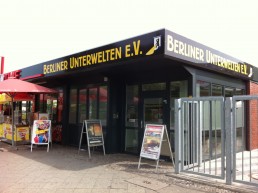
Under the Streets of Berlin is a Bunker World
At one corner of the station, there is an old, green, iron door. On the other side of this door unfolds an amazing bunker labyrinth from the time of the WWII! The tour lasts about 90 minutes altogether and during this period you’ll see most of the insides of this bunker. It holds inside itself i.e. exhibitions of war era items and harsh, bare concrete chambers. When Berlin was under an air strike attacks during the WWII, the civilians came to seek cover into these bunkers.
But in reality, these bunkers were not safe at all. The safety was just an illusion created by the German government. These “bunkers” were actually so poorly built that they would have collapsed if just one air bomb would have hit them close enough. So they were death traps instead of bomb proof shelters.
There is an oppressive atmosphere almost everywhere in the bunkers, but somehow the most distressing feeling was at one of the bunkers’ toilets. Our guide told us that when the Soviet Union troops conquered Berlin at the end of the war, many German women decided to hang themselves in that bathroom rather than to leave themselves at the mercy of the Soviet troops. It was a disturbing fact to hear.
And besides these women, many other people had also died inside those walls. So lots of energies – good and bad – have been left inside the concrete walls. I think ghost hunters would have an attractive investigation grounds over there. When walking along those narrow hallways, you can feel a little glimpse of the reality of how it may have been like during the war. But of course, you really can’t imagine, not really, because you weren’t there and probably not even born yet.
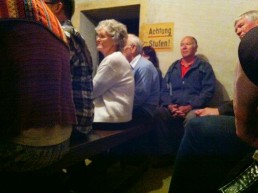
When our whole group fitted themselves to sit down in one, tiny bunker, on narrow, wooden benches and the steel jacket doors of the room were closed, someone with claustrophobia would have panicked. At the times of war, in this particular room, there had been twice as many people sitting around and waiting for the air strike to cease.
Sometimes they would have sat in complete darkness if the powers were cut off. There were candles on the walls, at three different levels starting from the floor level. Their purpose was to tell the amount of oxygen left in the room. There weren’t any oxygen holes anywhere in the room when the doors were closed; it was a completely sealed. So there was no additional oxygen from anywhere. The flame of the candle faded out on its level where there weren’t any oxygen left.
So, if the last candle at the floor level went off – then the people in the room were already really close to suffocating to death unless the bombings were going to cease and the doors would be opened again. People who locked the doors of the bunker went for cover elsewhere and so there weren’t necessarily anyone around to open the doors in time.
Our guides also told us many other fascinating stories during the tour, but I ain’t going to tell you those in here. You have to go to Berlin and hear them for yourself. Especially one of the guides was really professional, and she was able to tell stories that made you feel like they had been happening right there and then. This tour is something so alternative that you just shouldn’t miss it. This is also definitely something very different from an ordinary tourist attraction.
Spreepark – the Abandoned Amusement Park From the DDR Era
On the next day, you can take the S-Bahn and go to spend a day in one of the largest parks in East Berlin – the Treptower Park. On its eastern side is also located the abandoned amusement park built for the old DDr’s party members and their families. This amusement park is called the Spreepark.
Nowadays the park is open to public for visiting, so you don’t have to squeeze yourself in through the holes in the barbwire fence while trying to avoid the guards like you used to. However, outside the opening hours, the park is still said to be guarded by dogs and security officers. And I have to admit, that it was tempting – to try going in there at night.
It would’ve been an entirely different atmosphere in the dark when the dead clowns, rusty roller coasters, and skewed Ferris wheel would have created a haunting surroundings for your exploration. It could even be sensed during the daytime – a strange feeling of the days gone by hanging in the air.
When DDR collapsed, Spreepark was bought by private persons and during this private ownership, its story has got even wilder and strange. The park went bankrupt after a short while, and its owner tried to smuggle drugs inside the amusement park devices which had been sold to abroad. The owner was caught by the police. After this incident, the park was closed for a long time and was left to slowly rot away. Nowadays its owners have understood its value again and have begun to try to commercialize it again.
A couple of years ago (in 2012) there was a little train running through Spreepark. From the train, you could see the best parts of the park. It cost 2€/person. And you could even bring your own beer aboard! Sadly you’re not allowed to wander around the park independently, and the permitted areas are fenced and actually pretty small compared to the total size of the park.
If you still go behind the fences take care that nobody will see you going into the restricted areas! We went, of course. To take some pictures of the rotting items but when some guy who was part of the Parks’ “staff” noticed us, he drove us quickly away by shouting a lot in German and being pretty aggressive.
We pretended that we didn’t understand German, but that didn’t help a lot. But it’s still always quite fun to do something that’s prohibited, it gives you a bit of an adrenaline rush, and I absolutely love it!
UPDATE: We've sadly noticed that nowadays they’re even arranging bigger tours in Spreepark, and I guess it won’t feel quite as ”abandoned” anymore as it was back in 2012. It seems like the owners are commercializing this place really fast, so go see it now before it is totally ruined!
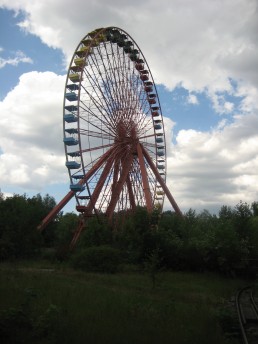
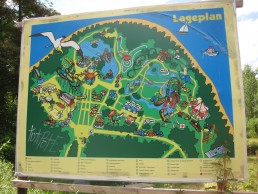
A Peek Into the World of the Secret Police of DDR in the Stasi Museum
The third great, but a different place to go to in Berlin is a fascinating look inside an organization which was the backbone of the deceased state called the DDR (East-Germany). This place is the Museum of STASI, the former secret police of the DDR, an equivalent to the KGB of Russia.
The museum is in a building complex which was the archives of the STASI. One of those square looking buildings contains hundreds of meters of files that the secret police gathered of DDR’s residents. A visit here is an eye-opening look into the near history of Germany. The archives opened a few years ago to the citizens of Germany so that they could ask for permission to go the archives and see if there were something recorded about them or their relatives. The opening of the Archives caused a rush.
You can reach the Stasi museum best by metro. Take the line U5 and stay off at Magdalenenstraße. Some of the best pieces of the exhibitions are the old spying equipment displayed. You’ll be amazed about what kinds of machines had been invented just for spying your own neighbor!
Stasi also took advantage of peoples’ natural sense of paranoia and curiosity by harnessing them very effectively for its own use. You can also visit the office of Erich Mielke (the famous head of STASI), left mostly in the state it was in when the DDR fell. The exhibition also offers a deep intoduction into the events that eventually destroyed Stasi as well as the whole state of DDR. The admission fee is just 5€ and probably there won’t be many other people so you can explore the exhibitions at your own pace.
A Decadent Photographer and the Legend of the Silver Screen
When we are speaking of the museums of Berlin; if you’re a photography enthusiast, your place to visit is the Museum of Helmut Newton. His foundation keeps this museum near the Zoologischer Garten’s subway station. Just take the Jebenstrasse exit and you’ll find the museum at the house number 2. Entrance fee is 10€ and the exhibitions change quite often. I personally adore his b/w –works of which can transmit some erotic and mystic charges onto the looker. His decadent pictures are photographic art in its very meaning, although many of them have also been banned at some times because of their erotic features. Check the current exhibition from their website and go and have a heartful of beautiful pictures.
BONUS TIP: Helmut Newton is buried in the same graveyard as Marlene Dietrich. Actually his grave is just a few graves from the final resting place of this legendary silver screen star. This graveyard is a tiny but cozy place called ”Städischer Friedhof III” and it’s in Friedenau. So if you like visiting famous graves, here you can see two on one visit!
East Side Gallery and the Best Flea Market in Berlin
You just have to see the famous Berlin Wall at some point, so go see it to the place where it’s at its best – the East Side Gallery. There are all the most famous murals – also the one with Brezhnev and Honecker kissing, among many others.
And for the last, but not least activity, if you’re in Berlin on Sunday, do not miss out the fantastic flea market in Mauerpark! It’s massive in size, and you can find just about anything you can imagine. If hunger and thirst are threatening to get you down while touring the market, you’ll find a big selection of food and drinks available. You can find almost anything from ethnic foods to organic goods. Accompanied by a cold, German beer, you’ll kill your hunger for sure!
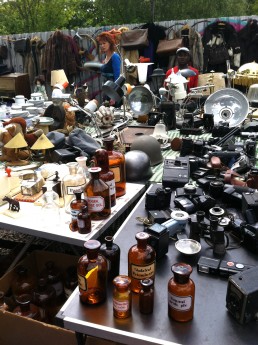
You May Also Like to Read:
The Mighty Murchison Falls and its National Park in Uganda
Murchison Falls National Park has versatile biodiversity and many animals. Cruise on the Nile river and visit its great, namesake falls.
The Carved Zanzibar Doors in Stone Town, Tanzania
Elaborately carved wooden doors tell stories of the residents’ roots, religion, and profession.
The Christmas Market of Tallinn’s Old Town
Feel the spirit of the Middle Ages at the Rathaus Square in Tallinn, filled with the tiny cottages selling everything from handicrafts to mulled wine.
Valencia’s Old Town Merges Famous Sights With Street Art
Narrow alleys of El Carmen host a weird mix: subcultures and street art, orange gardens, old mansions, and the most iconic sights of the city.


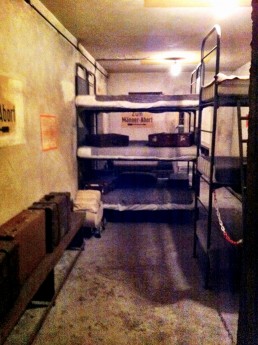
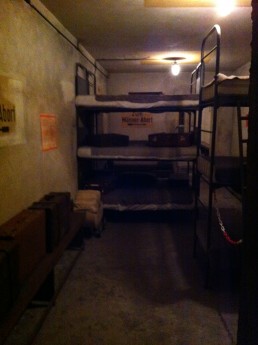
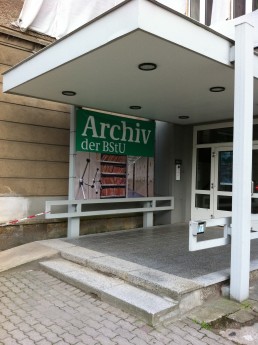
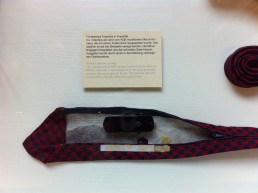
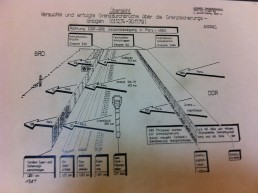
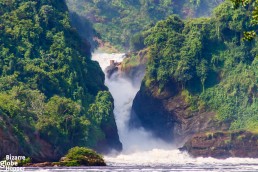
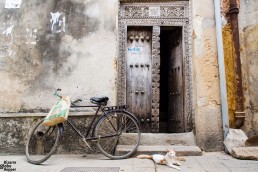
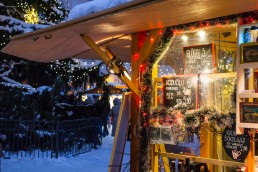
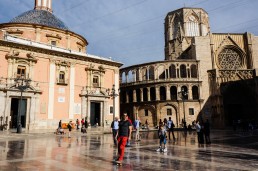
What an interesting post, right up my street!